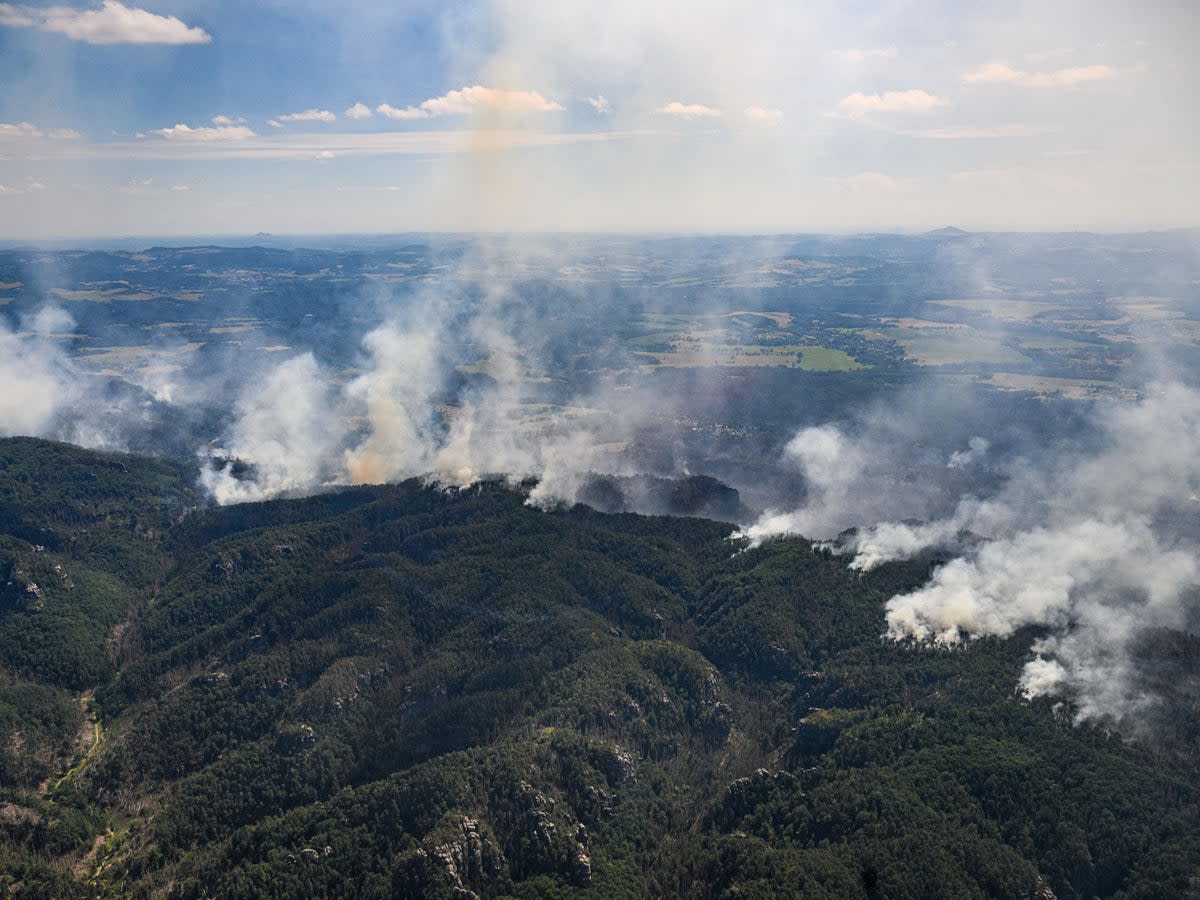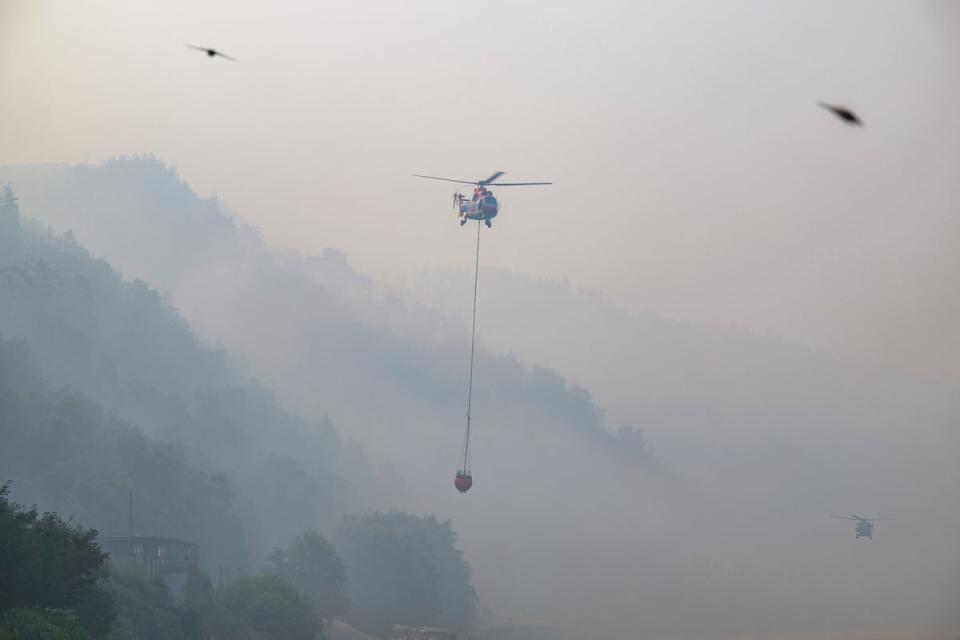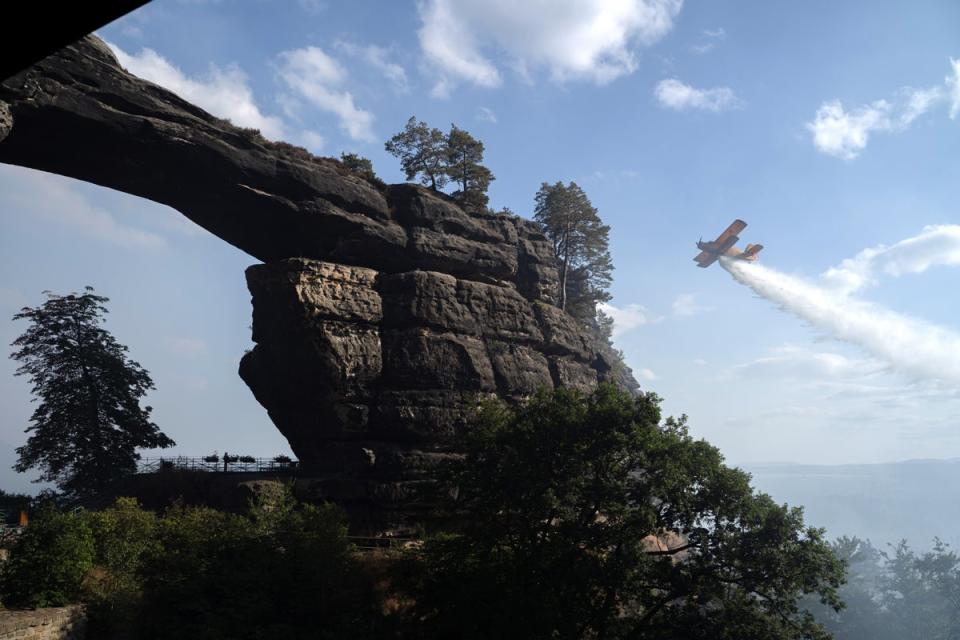Hundreds evacuated as wildfire ravages national park on German-Czech border

Vast wildfires that have prompted the evacuation of hundreds of people are burning for a fifth consecutive day, ravaging a forested national park in Germany and the Czech Republic.
Hundreds of firefighters from the two countries, as well as neighbouring Poland and Slovakia, have been battling the inferno since it broke out in the Bohemian Switzerland national park on the border last weekend.
The fires – which followed last week’s extreme heat – have prompted the evacuation of some 450 people in the Czech Republic, with smoke from the flames inhaled by residents 100 kilometres away in the capital Prague, according to local reports.
Having felled trees and used aircraft to drop more than 100 tonnes of water – largely sourced from the Elbe river – in an attempt to douse the flames, authorities seemed to have the fires under control on Wednesday.
But German news agency dpa reported that the blaze had spread again early on Thursday morning.
Eight firefighting helicopters were working to douse the flames in the region, but their access has been hampered by hilly and rocky terrain.
With more than 600 acres of forest said to be burning on Thursday, local authorities urged tourists to stay away from the area.
Saxony state officials have banned hikers from entering several forests in the region, but in spite of the move as many as 40 people were reported on Wednesday to have flouted the ban.
“It’s all very tense. We can by no means speak of an easing of the fire yet,” said Saxony’s interior minister, Armin Schuster, adding that firefighters “have reached the limits of their capabilities”.

Warning that “it looks like the situation could get worse”, a German local district spokesperson was quoted by the Frankfurter Allgemeine Zeitung newspaper as saying that no towns or buildings had been evacuated there so far – but such plans could be implemented quickly if necessary.
However, across the border, broadcaster Radio Prague reported on Wednesday that some 450 people had been evacuated as the blaze threatened villages surrounding the national park – with several houses said to have been razed in Mezná.
There were also fears for two major landmarks in the national park: the idiosyncratic Sokoli Hnizdo hotel and the Pravcice Gate, which is the largest naturally formed rock arch in Europe and has featured in multiple films, including The Chronicles of Narnia.
The director of the Ústí nad Labem fire service told the broadcaster on Wednesday that he could not rule out some damage to the attractions.
Dr Pavel Benda, the director of the national park, told local media that the fires were of a greater magnitude than seen typically before.

“There are fires in Bohemian Switzerland every year, but not on such a scale. We are no longer talking in terms of hectares, but rather square kilometres,” he was reported as saying by the BBC.
In the nearby German state of Brandenburg, another large forest fire that flared up again on Wednesday was said by authorities to have been brought under control – but was still burning an area of more than 1,200 acres.
Další den je za námi ale stále bojujeme.👨🚒
⁰#nevzdameto pic.twitter.com/LQpz5Apavd— Hasičský záchranný sbor ČR (@hasici_cr) July 26, 2022
A police helicopter scouted the area with a thermal camera to look for pockets of embers that could ignite into flames. Some areas are contaminated with Second World War ammunition and are too dangerous for firefighters to enter because the heat or human contact could cause explosions.
Germany’s army has sent several military helicopters to both fires to support local units.
Additional reporting by AP


